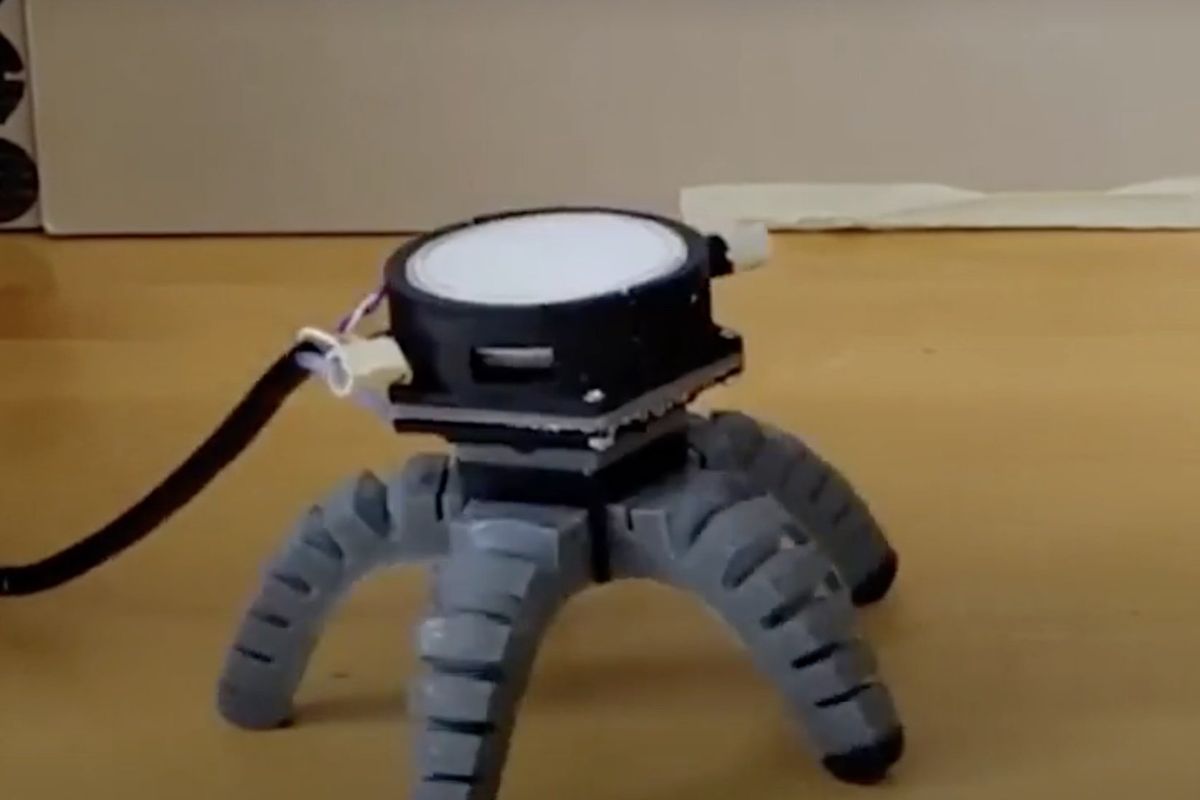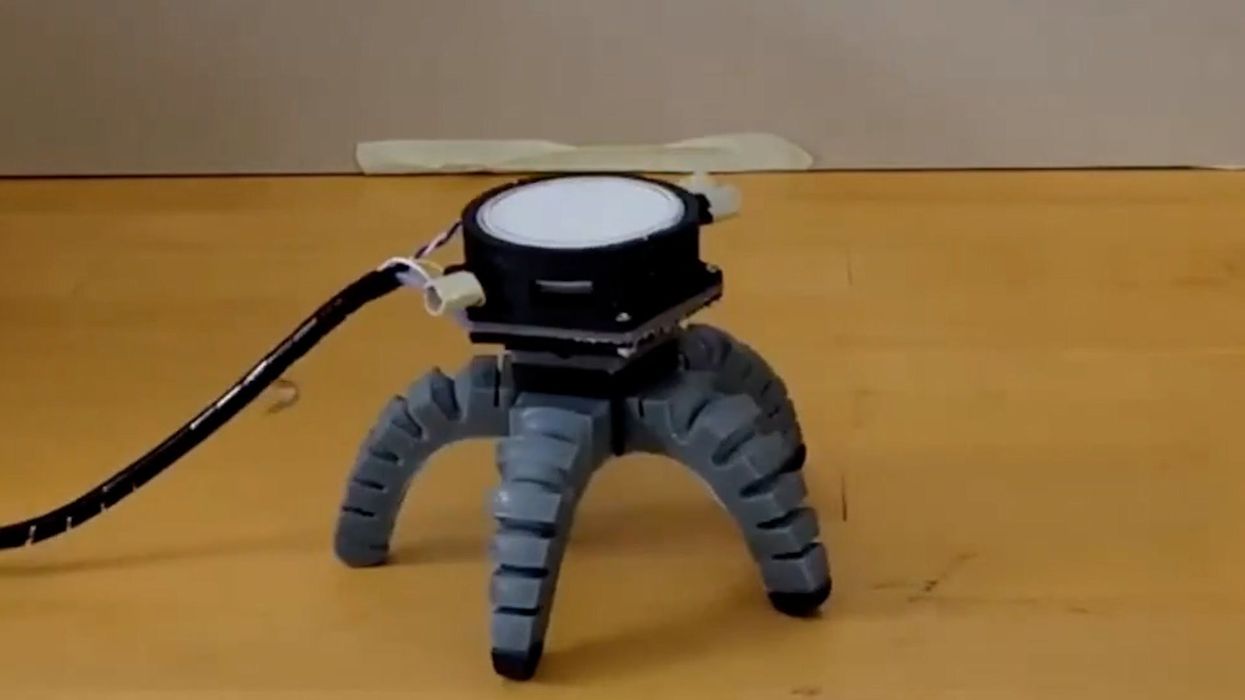Sinead Butler
Sep 16, 2024
Mushroom placed in robot body learns to move
Robert Shepherd / Science.org
A new type of robot has been created by scientists which is controlled by a mushroom.
The kind of mushroom used to power the creation is a king trumpet which controls the movement of the two biohybrid robots instead of the typical power sources such as mains electricity or battery.
Researchers in the US (Cornell University) and Italy (Florence University) managed to engineer the electrical signals made by the fungi to sense and respond to the environment.
One of the robots was shaped like a starfish as a clip shows it using its legs to move across a surface, while the other robot was on wheels to get about.
These findings were made in a study called ‘Sensorimotor control of robots mediated by electro-physiological measurements of fungal mycelia’ published in the journal Science Robotics.

“Living systems respond to touch, they respond to light, they respond to heat, they respond to even some unknowns, like signals,” said Anand Mishra, a research associate in the Organic Robotics Lab at Cornell.
“That’s why we think, OK, if you wanted to build future robots, how can they work in an unexpected environment? We can leverage these living systems, and any unknown input comes in, the robot will respond to that.”
Outcomes often vary depending on the robot's input, for example, different light conditions such as ultraviolet light and natural spikes in the fungus's signals.
Harnessing the mushroom's ability to sense chemical and biological signals may be beneficial in the future, particularly since mushrooms can survive in challenging conditions.
“The potential for future robots could be to sense soil chemistry in row crops and decide when to add more fertiliser, for example, perhaps mitigating downstream effects of agriculture like harmful algal blooms," added Rob Shepherd, a professor of mechanical and aerospace engineering at Cornell.
This isn't the first instance of living organism inside a robot. Previously an artificial worm brain was placed inside a Lego robot, while a machine integrated with living tissue was created by researchers from the Massachusetts Institute of Technology (MIT) earlier this year.
Sign up to our free indy100 weekly newsletter
How to join the indy100's free WhatsApp channel
Have your say in our news democracy. Click the upvote icon at the top of the page to help raise this article through the indy100 rankings.
Top 100
The Conversation (0)














